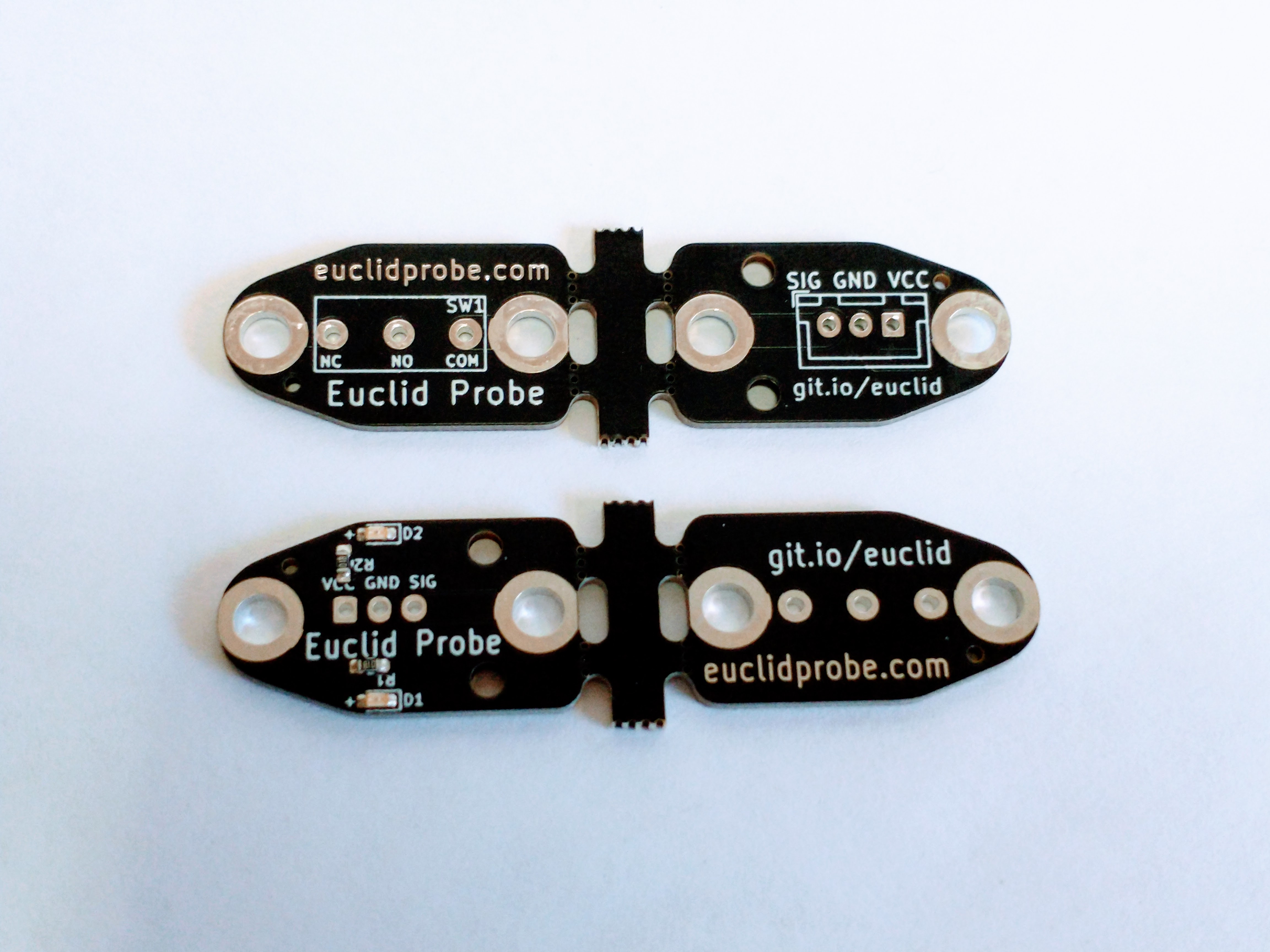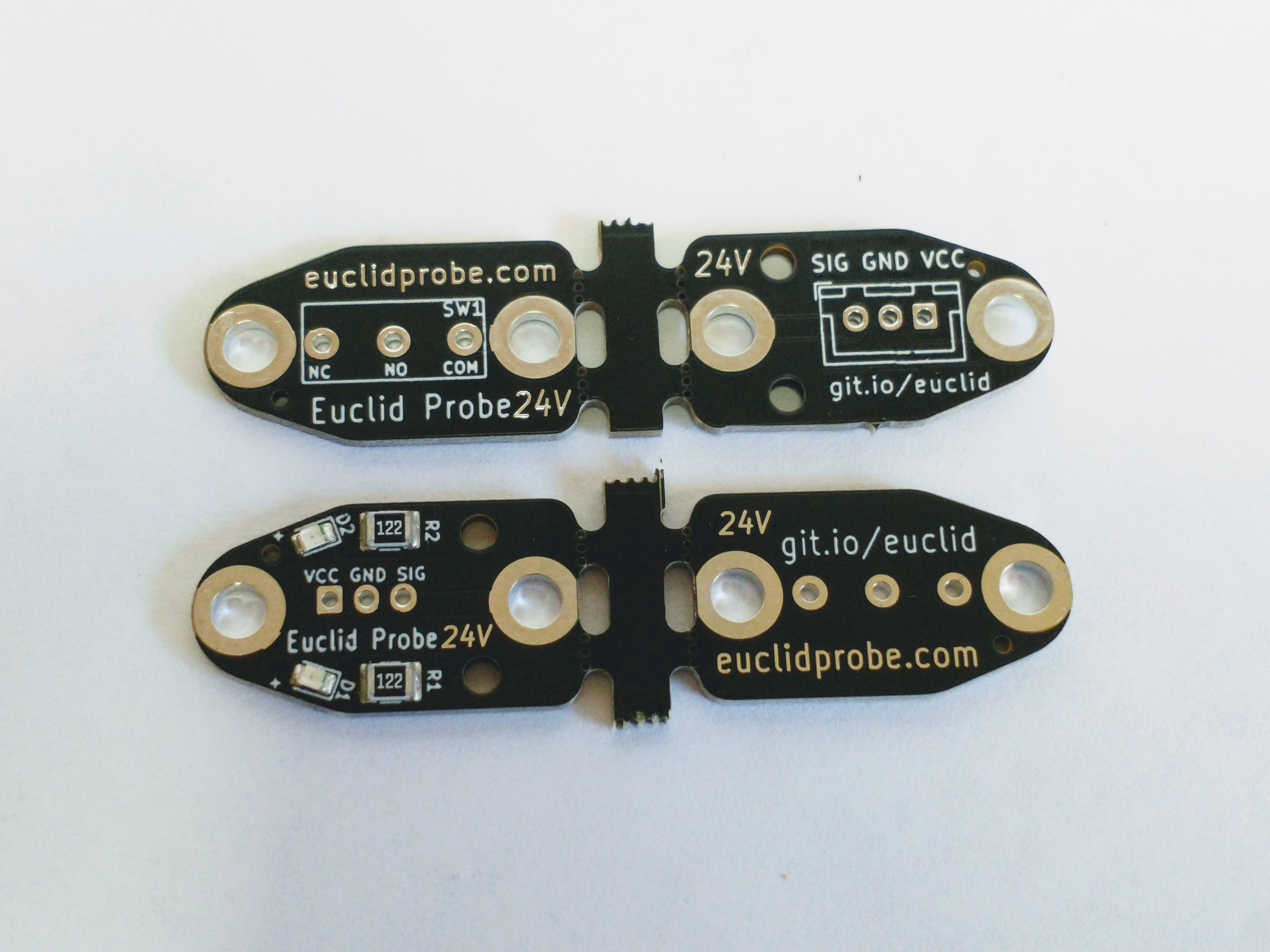Currently there are 2 versions of Euclid Probe kits available, 5V & 24V. There is no difference in price.
The voltage only matters if you intend to illuminate the LEDs as status and function indicators and where you get that power from. See 3-Wire installation for more info.
What are the Differences?
- The PCB’s and circuitry are the same
- The difference in models is the maximum voltage that the probe can carry
- If you are wiring directly to an open endstop port, the 5V or 24V version will work.
- If you are wiring to a high voltage toolhead break out board, then the 24V version is likely what you need.
- 24V components are sized to handle driving the LED’s at the higher voltage.
- LED’s on the 24V probe run at 5V will be slightly dimmer in comparison.
How to Decide Which Version to Get?
Here is a table with criteria to consider:
| Are you deploying to an endstop port? | Are you using a remote CAN-BUS controller? |
|
|
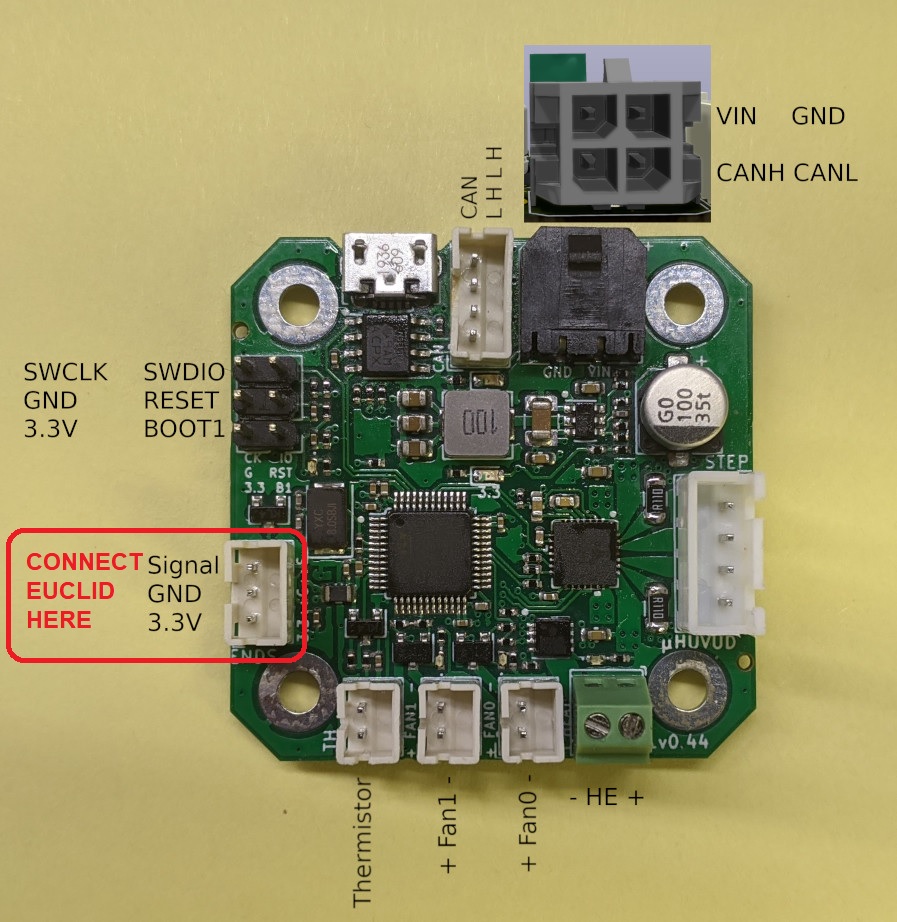
|
| Then all you need is the 5V version | Then all you need is the 5V version |
| Are you using a remote toolboard & 24V Probe Input? | Are you using a remote toolboard and then using an endstop port? |
|
|
|
| Then all you need is the 24V version | Then all you need is the 24V version |
How to tell Them Apart?
How does it Work?
Very well actually…. here are some photos of the toolboards with 3.3V, 5V and 24V running through them. As you can see, the 3.3V is slightly dimmer than the 24V, but still bright enough to see.

|

|
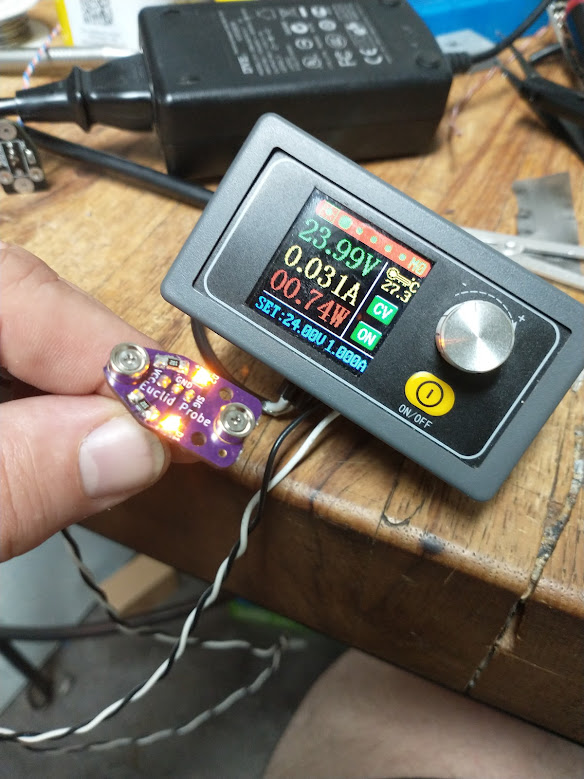
|
| 24V Euclid Probe Prototype on 3.3V | 24V Euclid Probe Prototype on 5V | 24V Euclid Probe Prototype on 24V |
If you want to see how the circuit works, the Falstad.com simulations are linked below. Click on the swtich to see the Z_Probe pin input change.
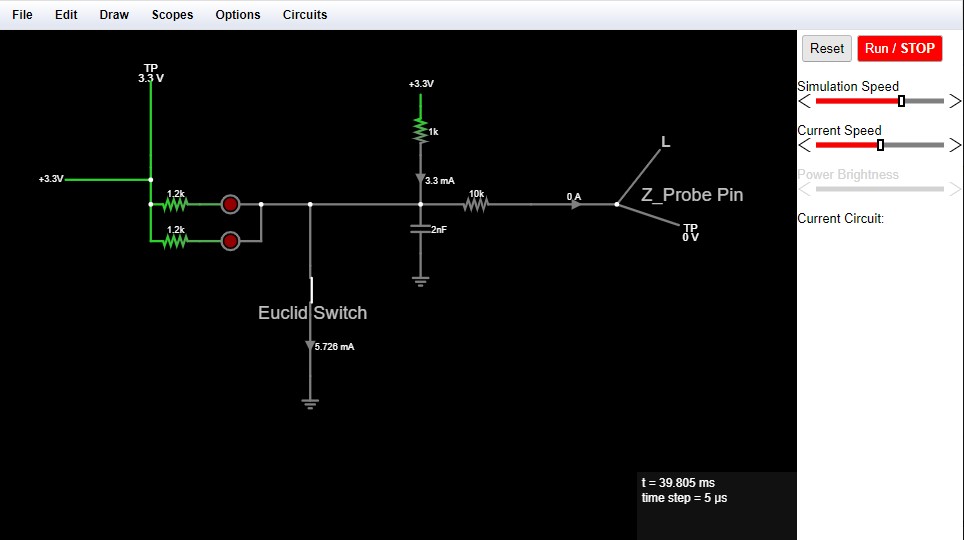
|

|
| Euclid as typical 3.3V/5V endstop or Z-Probe input simulation Click images to enlarge and simulate |
Euclid as 24V Z-Probe input simulation Click images to enlarge and simulate |
Logic Voltages
Generally speaking, 16bit boards used 5V logic and 32bit boards used 3.3V logic. Example 16bit controllers include MEGA/RAMPS. AM based Duet3d controllers, LPC based controllers like Smoothieboard, SKR1.4, MKS Base, etc… All Euclid Probe versions will work with these controllers when plugged into a normal endstop port.
The 24V capable PROBE ports on the various controllers are not standard or uniform. While we do our best to try and provide users all the necessary documentation as we encounter the various controllers. Users should expect to coordinate the wiring of Euclid Probe to their controller and their firmware configuration.
As always, if you need assistance or have questions, please feel free to contact us via the Feedback link above of via the Discord channel.
